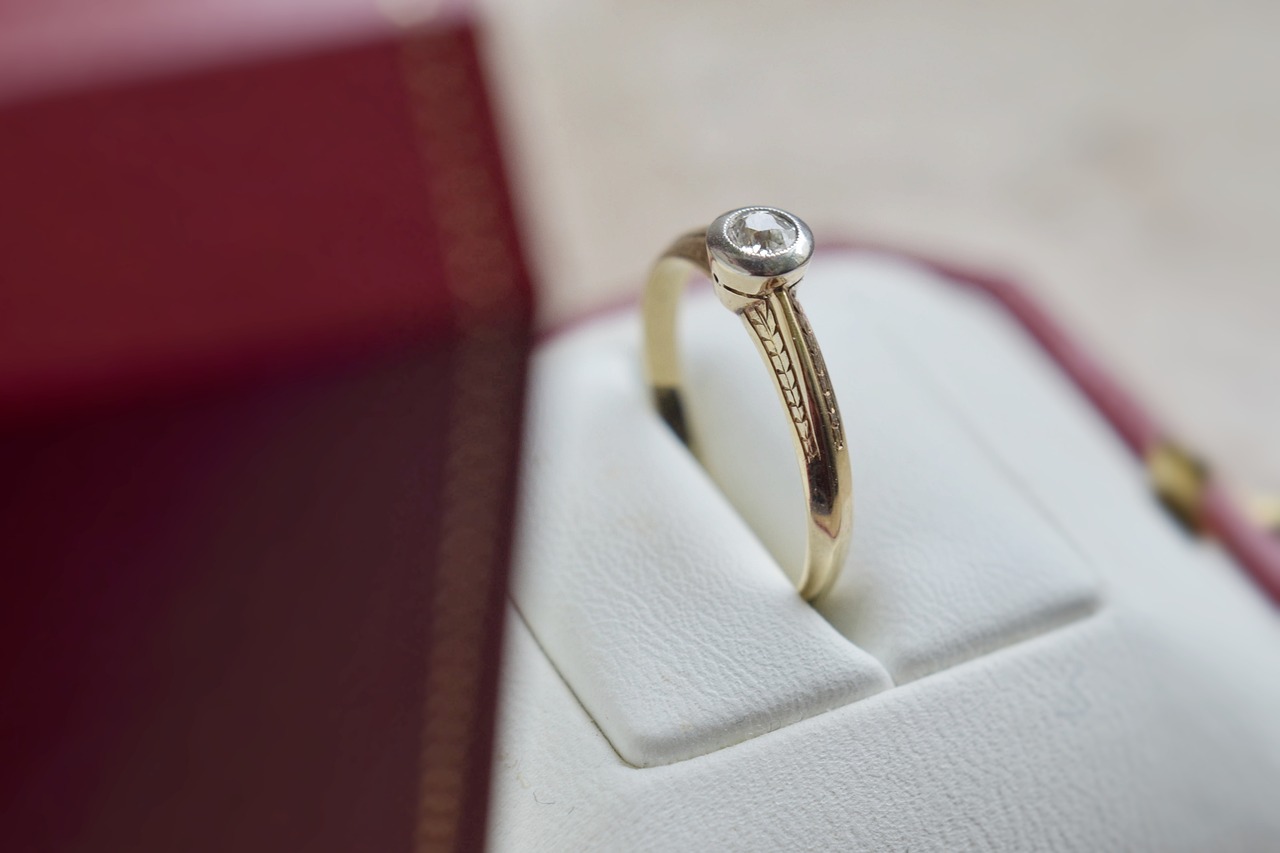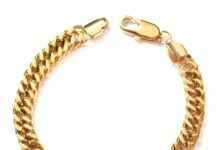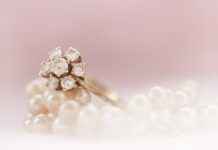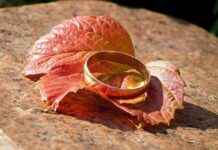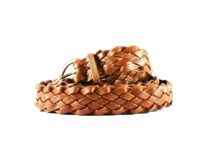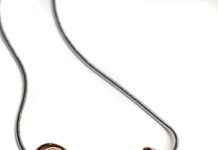This article provides essential tips and insights for purchasing antique jewelry safely, ensuring you avoid scams while making informed decisions about your investments.
Understanding Antique Jewelry
Antique jewelry is not just about age; it’s a reflection of historical craftsmanship and unique design. Understanding the different styles and their significance can help you appreciate the true value of these pieces and avoid common purchasing pitfalls.
Identifying Authentic Antique Jewelry
To recognize genuine antique jewelry, you need to be aware of the key characteristics that set authentic pieces apart from replicas. This includes knowledge of materials, craftsmanship, and design elements.
- Common Materials Used in Antique Jewelry: Familiarize yourself with materials like gold, silver, and various gemstones, as these can indicate authenticity.
- Gold and Silver Markings: Understanding the markings on precious metals can help you assess their purity and authenticity.
- Gemstone Identification: Differentiate between natural and synthetic stones to ensure your investment is wise.
Craftsmanship and Design Styles
Each era boasts distinct design styles and craftsmanship techniques. Learning about these can aid in identifying the period of a piece and assessing its value accurately.
Where to Buy Antique Jewelry
Choosing the right venue for purchasing antique jewelry is essential. Options include:
- Online Marketplaces: While they offer variety, it’s crucial to navigate these platforms safely.
- Auctions and Estate Sales: These can be treasure troves, but knowing how to participate effectively is key.
Evaluating the Seller
Assessing a seller’s credibility is vital. Consider researching their background, reading reviews, and checking testimonials to gauge their reliability.
Negotiating the Price
Understanding the market value of a piece can empower you during negotiations. Building rapport with the seller can also facilitate better deals.
Finalizing the Purchase
Once you’ve selected a piece, ensure you request documentation that verifies authenticity and understand the seller’s return policy to protect your investment.
Protecting Your Antique Jewelry Investment
After your purchase, maintaining your antique jewelry is essential. Proper care and considering insurance options can help retain its value over time.
In conclusion, purchasing antique jewelry can be a rewarding experience if approached with knowledge and caution. By following these guidelines, you can make informed decisions and enjoy your investments without falling victim to scams.
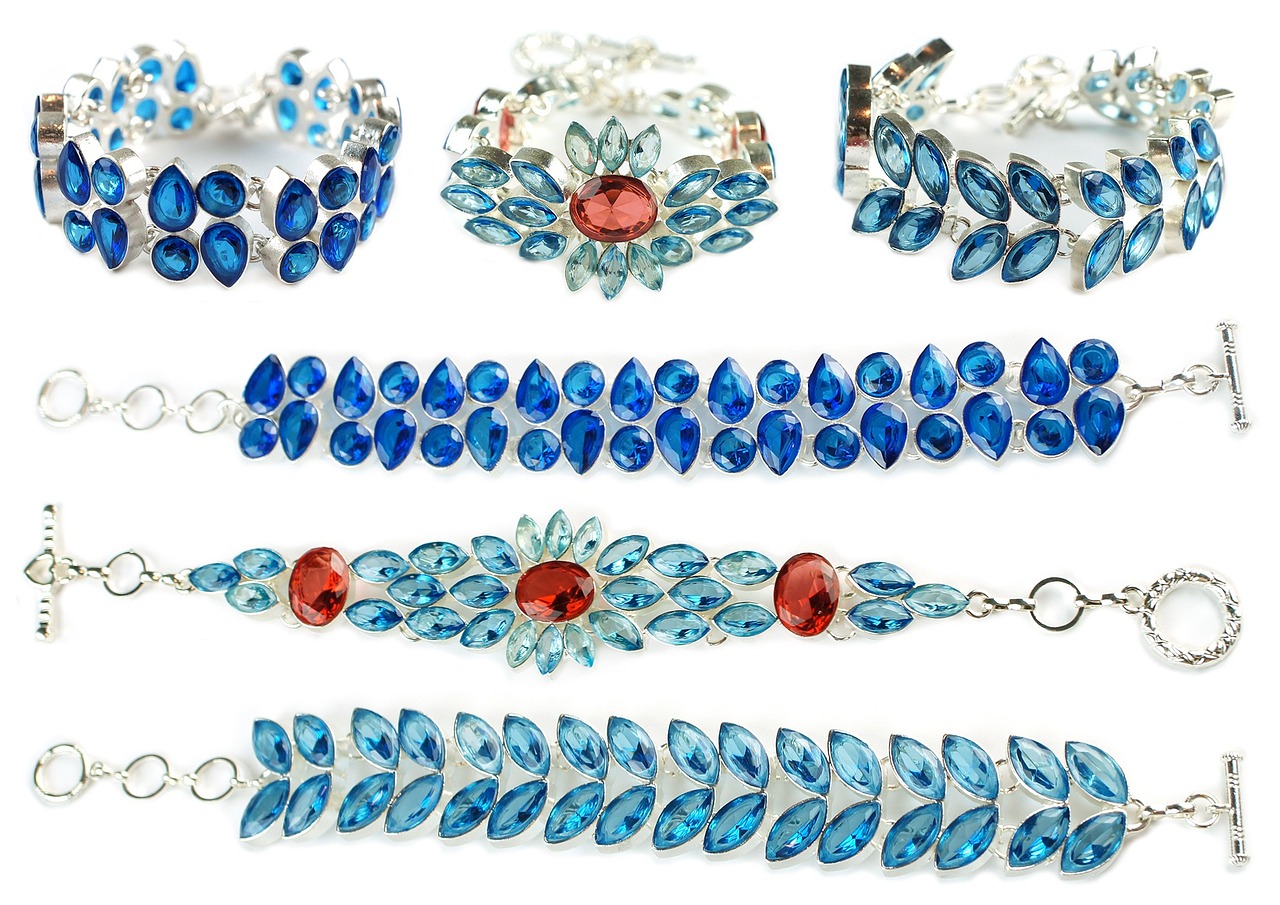
Understanding Antique Jewelry
Antique jewelry is not just a decorative accessory; it is a historical artifact that tells a story of its time. Defined primarily by its age—typically over 100 years—and the intricate craftsmanship that goes into its creation, antique jewelry offers a glimpse into the cultural and artistic trends of past eras. Recognizing the historical significance of these pieces can greatly enhance your appreciation for their value and artistry.
To truly understand antique jewelry, one must delve into the various styles and craftsmanship techniques that have evolved over the centuries. From the ornate designs of the Victorian era to the minimalist elegance of Art Deco, each period has its unique characteristics that reflect the social and economic conditions of the time. This knowledge not only enriches your experience as a collector but also helps you make informed purchasing decisions.
Moreover, it is crucial to be aware of potential pitfalls when buying antique jewelry. The market is rife with reproductions and fakes, which can mislead even the most experienced collectors. By familiarizing yourself with the distinguishing features of authentic pieces—including materials, design elements, and hallmark markings—you can significantly reduce the risk of falling victim to scams.
In conclusion, understanding antique jewelry involves more than just recognizing its age; it encompasses an appreciation for the craftsmanship and historical context that define each piece. By educating yourself on these aspects, you can enhance your collecting experience and ensure that your investments are both meaningful and secure.
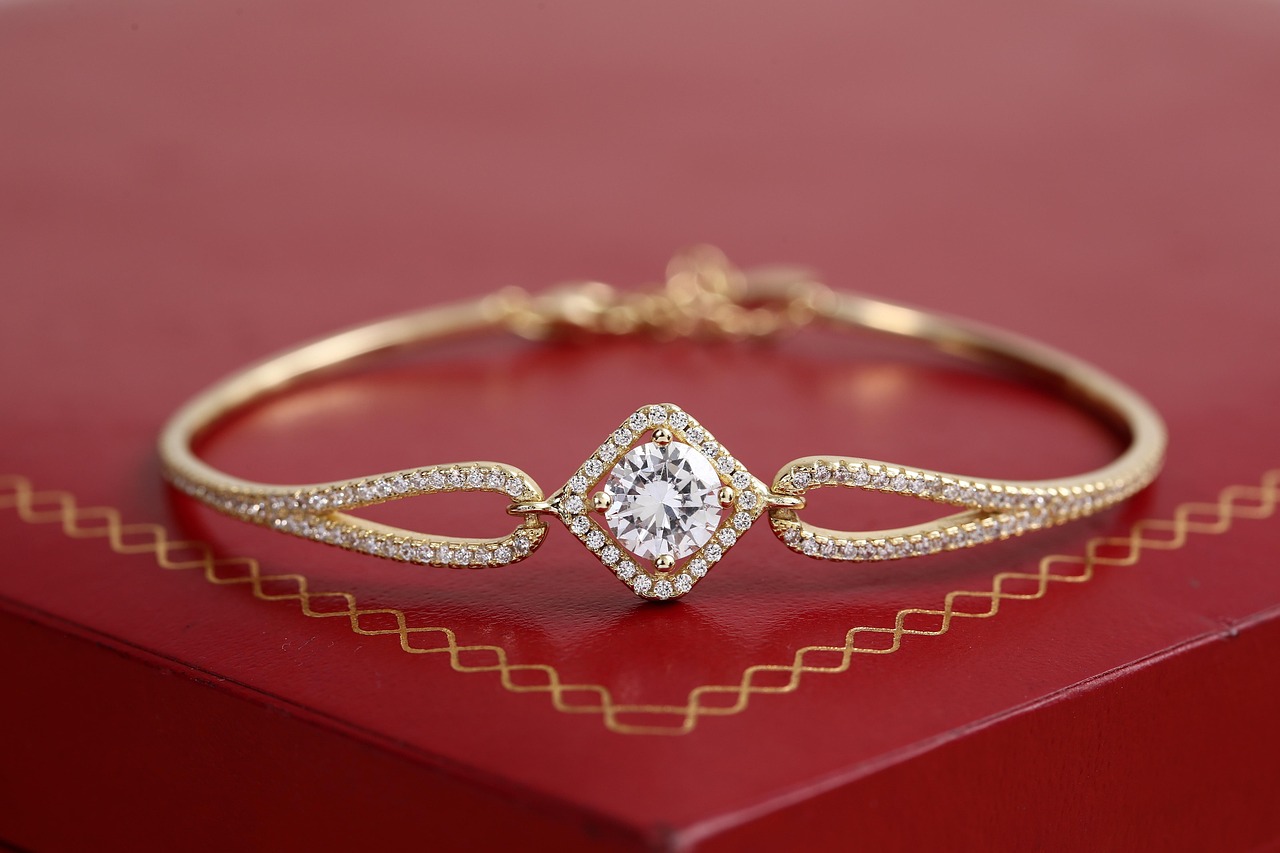
Identifying Authentic Antique Jewelry
When it comes to antique jewelry, the allure of unique pieces that tell a story is undeniable. However, the market is rife with reproductions and fakes, making it essential for buyers to be well-informed. Understanding how to identify authentic antique jewelry is crucial to ensure that your investment is genuine and valuable.
To recognize authentic pieces, one must have a thorough understanding of the materials, craftsmanship, and design characteristics that define antique jewelry. Below are some key factors to consider:
- Materials: Genuine antique jewelry is often made from high-quality materials such as gold, silver, and various gemstones. Familiarity with these materials can help you assess authenticity. For instance, antique gold typically has a higher karat than modern pieces.
- Craftsmanship: Authentic pieces often showcase superior craftsmanship. Look for intricate details, hand-engraved designs, and unique settings. Mass-produced items usually lack this level of detail.
- Design Styles: Each era of jewelry design has distinct characteristics. For example, Victorian jewelry often features floral motifs, while Art Deco pieces are known for their geometric shapes. Understanding these styles can help you date a piece accurately.
In addition to these characteristics, it is important to look for hallmarks or maker’s marks that indicate the piece’s origin and authenticity. These markings can provide valuable information about the jeweler and the age of the piece.
Lastly, consulting with a qualified expert or appraiser can provide additional assurance when purchasing antique jewelry. Their expertise can help you navigate the complexities of authenticity and value.
By equipping yourself with this knowledge, you can confidently identify genuine antique jewelry and make informed purchasing decisions.
Common Materials Used in Antique Jewelry
When it comes to purchasing antique jewelry, understanding the materials used is essential for ensuring authenticity. Different materials such as gold, silver, and gemstones possess unique properties that can help you determine whether a piece is genuine or a reproduction. Familiarizing yourself with these materials not only enhances your appreciation for antique jewelry but also equips you with the knowledge necessary for making informed purchases.
Gold is one of the most sought-after materials in antique jewelry. Its durability and luster make it a favorite among jewelers. Authentic gold pieces often bear markings that indicate their purity, such as karat stamps (e.g., 10K, 14K, 18K). Understanding these markings is crucial, as they provide insight into the quality and value of the piece.
Silver is another common material found in antique jewelry. Like gold, silver pieces often have hallmarks that indicate their purity, such as sterling silver (92.5% silver content). Recognizing these marks can help you avoid plated or fake silver items, which are less valuable.
Gemstones also play a significant role in the authenticity of antique jewelry. Genuine gemstones possess unique characteristics that set them apart from synthetic stones. For instance, natural stones may exhibit inclusions or color variations that are absent in their synthetic counterparts. Familiarizing yourself with common gemstones, such as diamonds, emeralds, and rubies, can greatly enhance your ability to identify authentic pieces.
In conclusion, understanding the specific properties of materials like gold, silver, and gemstones is vital when purchasing antique jewelry. By familiarizing yourself with these materials, you can make informed decisions and avoid potential scams, ensuring that your investment in antique jewelry is both rewarding and secure.
Gold and Silver Markings
play a crucial role in determining the purity and authenticity of these precious metals. When considering an antique jewelry purchase, understanding these markings can significantly enhance your ability to evaluate the true value of a piece.
Every piece of gold or silver jewelry typically bears a series of markings that provide essential information about its composition. These markings, often referred to as hallmarks, can include the metal’s purity, the manufacturer’s mark, and sometimes even the country of origin.
- Purity Marks: For gold, purity is measured in karats (K), with 24K being pure gold. Common purity marks include:
- 10K – 41.7% gold
- 14K – 58.3% gold
- 18K – 75% gold
- 22K – 91.7% gold
- 24K – 99.9% gold
- Silver Standards: Silver purity is often indicated by a numerical standard, such as:
- 925 – 92.5% silver (sterling silver)
- 800 – 80% silver
In addition to purity marks, you may also encounter maker’s marks which identify the jeweler or manufacturer. This can add historical value to the piece, as certain makers are renowned for their craftsmanship. Furthermore, understanding the country of origin can offer insights into the piece’s age and style.
When evaluating jewelry, it’s essential to verify these markings against reputable sources or guides to ensure their authenticity. Familiarizing yourself with common markings can help you avoid purchasing counterfeit items, which may be misrepresented as genuine antique pieces.
In conclusion, a thorough understanding of not only aids in identifying the metal’s purity but also enhances your overall purchasing confidence. By equipping yourself with this knowledge, you can make informed decisions and protect your investment in antique jewelry.
Gemstone Identification
is a crucial aspect of assessing the value and authenticity of antique jewelry. Distinguishing between natural gemstones and synthetic stones can significantly impact your investment decisions. In this section, we will explore the various methods and characteristics that can help you identify genuine stones, ensuring you make informed choices.
Natural gemstones are formed through geological processes over millions of years, while synthetic stones are created in laboratories. Understanding the differences between these two types of gemstones is vital for anyone looking to invest in antique jewelry.
- Visual Inspection: Examine the stone closely for any inclusions or imperfections. Natural gemstones often have unique flaws that are absent in synthetic stones, which are usually flawless.
- Color and Clarity: While natural stones may exhibit color variations, synthetic stones tend to have uniform color saturation. Be wary of overly perfect stones.
- Refractive Index: Using a refractometer can help measure the refractive index of a stone. This measurement can indicate whether a stone is natural or synthetic, as they often have different optical properties.
- Hardness Test: Conducting a hardness test using the Mohs scale can provide insights into the stone’s authenticity. Natural gemstones typically have specific hardness ratings that synthetic stones may not match.
Moreover, consulting with a professional gemologist can provide you with expert insights and verification services. They can perform advanced tests, such as spectroscopy, to determine the stone’s composition and origin.
In conclusion, identifying genuine gemstones versus synthetics is essential for anyone interested in antique jewelry. By employing various identification methods and seeking professional assistance when necessary, you can confidently ensure that your investment is both wise and valuable.
Craftsmanship and Design Styles
Understanding the craftsmanship and design styles of antique jewelry is essential for anyone interested in collecting or purchasing these unique pieces. Each historical period brought with it distinct styles and techniques that reflect the cultural and artistic values of the time. By familiarizing yourself with these characteristics, you can better identify the era of a piece and assess its value accurately.
Antique jewelry can be categorized into various periods, each with its own unique attributes:
- Georgian (1714-1837): Known for its intricate designs and use of natural gemstones, Georgian jewelry often features handcrafted techniques and unique motifs such as floral patterns and bows.
- Victorian (1837-1901): This era is characterized by a romantic style, with an emphasis on sentimental themes. Jewelry often included lockets and mourning pieces, showcasing intricate metalwork and gemstone settings.
- Art Nouveau (1890-1910): Marked by flowing lines and organic forms, Art Nouveau jewelry often incorporated enamel and natural motifs such as flowers and insects, reflecting a deep appreciation for nature.
- Art Deco (1920-1939): Known for its bold geometric designs and vibrant colors, Art Deco jewelry prominently featured diamonds and platinum, showcasing a more modern aesthetic that emphasized luxury and glamour.
Each of these periods utilized specific craftsmanship techniques that can help you identify authentic pieces. For instance, the filigree work seen in Georgian jewelry or the granulation technique used in Victorian pieces are indicators of their respective eras. Additionally, understanding the materials used during these times—such as the transition from gold to platinum—can further assist in dating a piece.
In conclusion, by learning about the various craftsmanship and design styles associated with different historical periods, you can enhance your ability to identify authentic antique jewelry. This knowledge not only aids in appreciating the artistry involved but also plays a crucial role in accurately assessing the value of a piece, ensuring that your investment is sound.
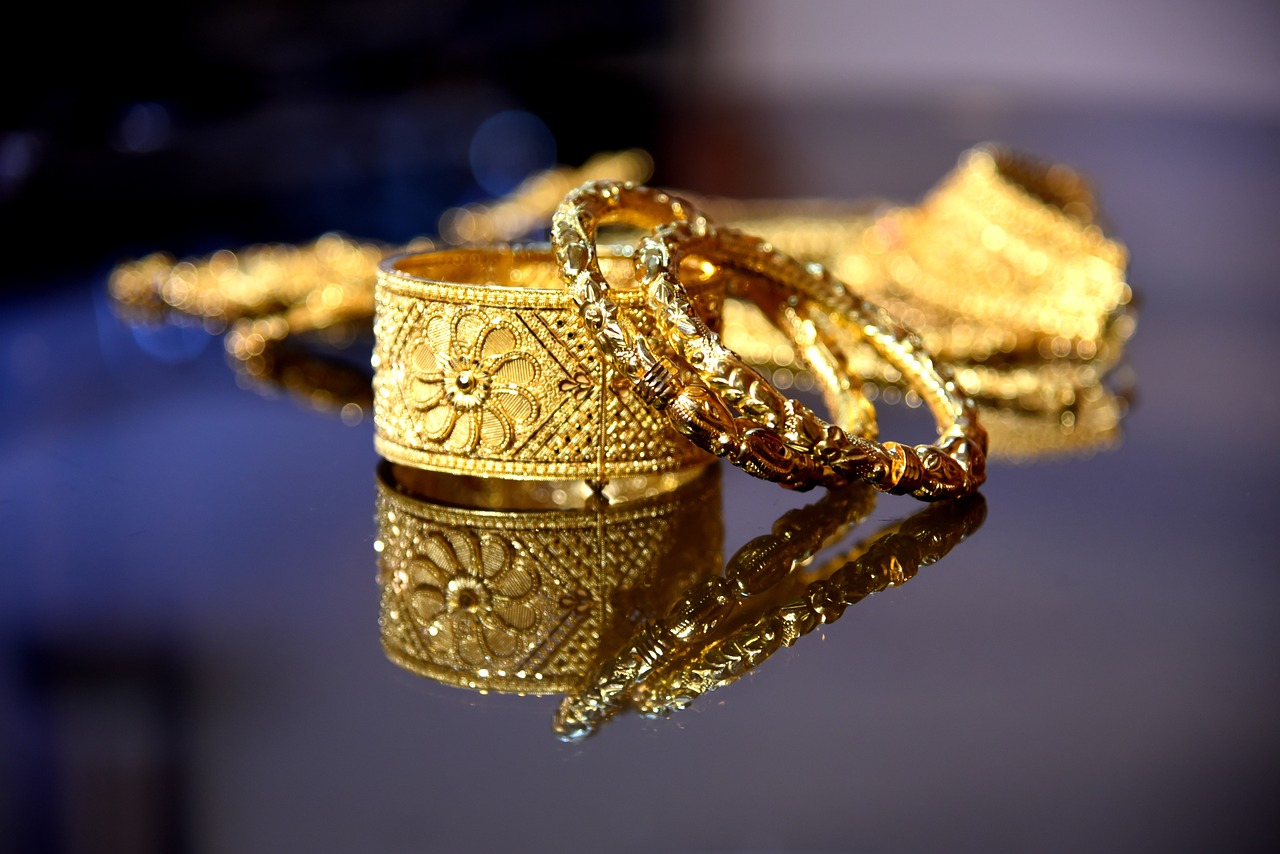
Where to Buy Antique Jewelry
Choosing the right place to buy antique jewelry is crucial for ensuring that you acquire genuine pieces without falling victim to scams. This section explores various options available for purchasing antique jewelry, including online platforms, auctions, and antique shops.
Online Platforms
The rise of the internet has transformed the way antique jewelry is bought and sold. Numerous online marketplaces, such as eBay, Etsy, and specialized antique jewelry websites, offer a vast selection of items. However, while these platforms provide convenience and variety, it’s essential to approach them with caution:
- Research the seller: Always check the seller’s ratings and reviews to gauge their credibility.
- Request detailed images: Ensure you see multiple angles and close-ups of the jewelry to assess its condition.
- Understand return policies: Familiarize yourself with the seller’s return policy in case the item does not meet your expectations.
Auctions and Estate Sales
Auctions and estate sales can be treasure troves for finding unique antique jewelry. These events often feature items with rich histories and can offer competitive pricing. To make the most of these opportunities:
- Attend previews: Many auctions allow potential buyers to view items before bidding. Take advantage of this to inspect pieces closely.
- Set a budget: Decide in advance how much you are willing to spend to avoid overspending in the heat of the moment.
- Ask questions: Don’t hesitate to inquire about the provenance and condition of the jewelry.
Antique Shops
Physical antique shops provide a tactile experience that online platforms cannot match. When visiting these shops, consider:
- Building relationships: Establish rapport with shop owners, who can provide valuable insights and may notify you of new arrivals.
- Negotiating prices: Many antique shops are open to negotiation, so don’t hesitate to discuss pricing.
- Seeking expert advice: Some shops employ knowledgeable staff who can help identify authentic pieces.
In conclusion, whether you choose online platforms, auctions, or antique shops, being informed and cautious will enhance your antique jewelry buying experience. Always prioritize authenticity and reliability to ensure your investment is worthwhile.
Online Marketplaces
have revolutionized the way we shop for antique jewelry, providing a vast selection that can cater to every taste and budget. However, while these platforms offer convenience and variety, they also present risks that buyers must navigate carefully to avoid falling victim to scams or misrepresentation.
When exploring , it is crucial to start by identifying reputable sites. Look for platforms that have a strong track record, positive user reviews, and transparent seller policies. Websites that specialize in antiques or vintage items often have better safeguards in place compared to general marketplaces.
Before making a purchase, thorough research is essential. Familiarize yourself with the specific type of antique jewelry you are interested in, including its historical context, typical pricing, and common characteristics. This knowledge will empower you to recognize whether a listed item is fairly priced or if it raises red flags.
Additionally, always examine the seller’s profile. A trustworthy seller should have a history of positive feedback, clear communication, and a willingness to provide additional information or photographs upon request. If a seller is reluctant to answer questions or provide documentation, it may be best to look elsewhere.
Moreover, secure payment methods are vital when purchasing online. Use platforms that offer buyer protection, such as credit cards or trusted payment services. This can provide an extra layer of security in case the transaction does not go as planned.
In conclusion, while online marketplaces can be a treasure trove for antique jewelry enthusiasts, exercising caution is paramount. By conducting thorough research, evaluating sellers carefully, and utilizing secure payment methods, you can enjoy a safe and rewarding shopping experience.
Auctions and Estate Sales
represent unique opportunities for enthusiasts and collectors of antique jewelry. These events can be treasure troves filled with remarkable finds, but navigating them effectively requires some preparation and knowledge.
Firstly, it’s essential to understand that auctions are competitive environments where items are sold to the highest bidder. This means that being aware of the bidding process is crucial. Familiarize yourself with how bidding works, including the increments in which bids increase and how to register as a bidder. Many auction houses provide pre-auction catalogs, which can be invaluable for planning your strategy.
On the other hand, estate sales often occur when a homeowner is downsizing or liquidating assets. These sales can offer a more relaxed atmosphere compared to auctions, but they still require keen observation. Arriving early can give you the advantage of first pick among the available items.
- Research the Event: Prior to attending, research the auction or estate sale. Look for details about the items being sold and the reputation of the auction house or estate sale company.
- Inspect the Items: Take your time to inspect the jewelry closely. Look for signs of authenticity, such as markings and craftsmanship.
- Ask Questions: Don’t hesitate to ask the auctioneer or estate sale staff questions about the jewelry. Understanding the history and provenance can greatly influence your purchasing decision.
- Set a Budget: It’s easy to get carried away in the excitement of bidding. Establish a clear budget beforehand to avoid overspending.
In conclusion, participating in auctions and estate sales can be a rewarding experience for acquiring antique jewelry. With a bit of preparation and a keen eye, you can discover stunning pieces that add value to your collection. Remember to stay informed and approach each event with both enthusiasm and caution.
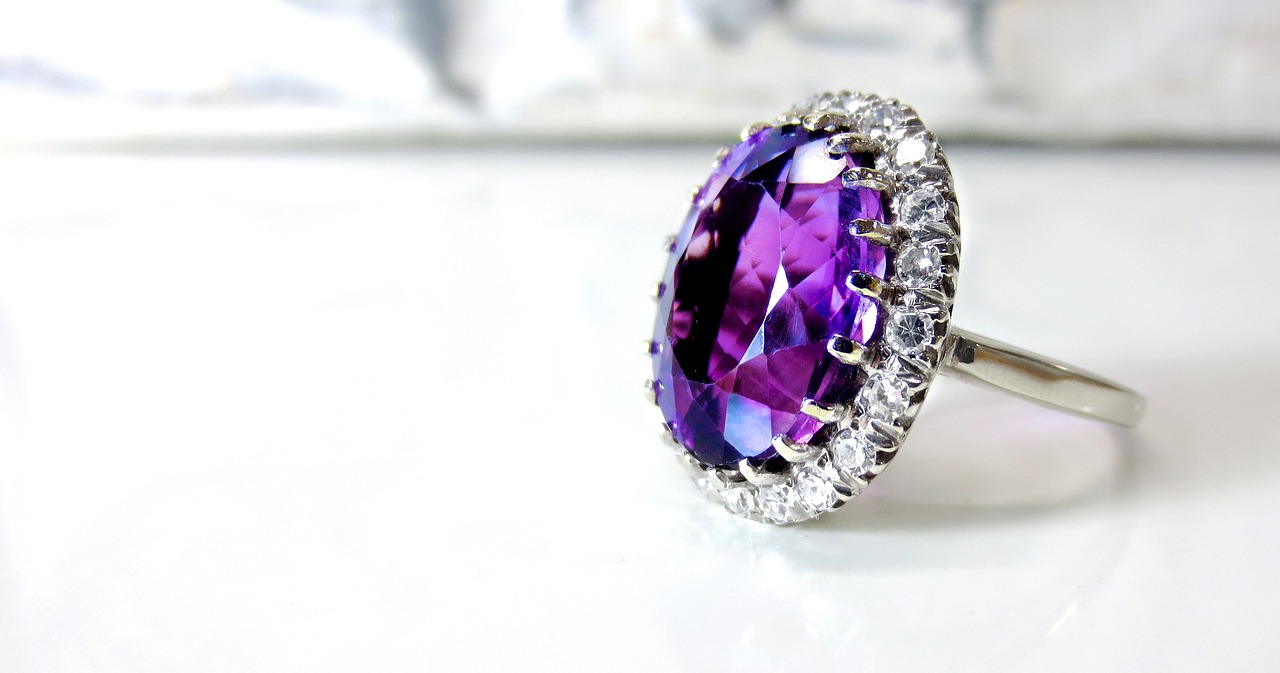
Evaluating the Seller
When it comes to purchasing antique jewelry, is one of the most critical steps to ensure a safe transaction. A trustworthy seller not only provides authentic pieces but also enhances your overall buying experience. Here are key factors to consider when assessing a seller’s credibility:
- Seller’s Reputation: Begin by researching the seller’s background. Look for online reviews and ratings on platforms such as Google, Yelp, and specialized antique forums. A seller with a consistent history of positive feedback is often more reliable.
- Experience in the Field: Consider how long the seller has been in the antique jewelry business. Experienced sellers are more likely to have a deeper understanding of the market and can provide valuable insights about their pieces.
- Transparency of Information: Trustworthy sellers are open about the history and condition of their items. They should provide detailed descriptions, including any repairs or alterations made to the jewelry.
- Return Policy: A clear and fair return policy is a sign of a reputable seller. Ensure that you understand the terms and conditions regarding returns or exchanges before making a purchase.
- Certifications and Documentation: Ask for any relevant certifications or appraisals that validate the authenticity of the jewelry. Sellers who can provide this documentation demonstrate their commitment to transparency and trustworthiness.
By taking the time to evaluate the seller thoroughly, you can significantly reduce the risk of falling victim to scams and ensure that your investment in antique jewelry is sound. Remember, a reputable seller is not just a vendor but a partner in your journey to owning beautiful, historic pieces.
Researching Seller Credentials
Researching a seller’s credentials is a critical step in ensuring a safe and satisfactory purchase of antique jewelry. By thoroughly investigating a seller’s background and reputation, buyers can gain valuable insights into their reliability and trustworthiness. Here are some effective tips to help you conduct thorough seller research.
- Check Online Presence: Start by searching for the seller online. Look for their official website, social media profiles, and listings on reputable marketplaces. A well-established seller often has a professional online presence that showcases their inventory and customer interactions.
- Look for Reviews: Customer reviews and testimonials are invaluable resources. Websites like Yelp, Google Reviews, and specialized antique forums can provide insights into previous buyers’ experiences. Pay attention to both positive and negative feedback to get a balanced view.
- Verify Credentials: Check if the seller is a member of recognized professional organizations, such as the Antique Jewelry & Watch Dealers Association (AJWDA) or similar groups. Membership in these organizations often indicates adherence to ethical standards and practices.
- Ask for References: Don’t hesitate to ask the seller for references from past clients. A reputable seller should be willing to provide contacts who can vouch for their credibility and the quality of their products.
- Assess Return Policies: A reliable seller usually has clear return policies in place. Understanding these policies can help you gauge the seller’s confidence in their products and their willingness to stand behind their sales.
- Inquire About Authenticity Guarantees: Ensure that the seller offers guarantees regarding the authenticity of their items. This can include certificates of authenticity or appraisals from qualified professionals.
By following these tips, you can significantly reduce the risk of dealing with untrustworthy sellers. Conducting thorough research not only helps you make informed decisions but also enhances your overall antique jewelry buying experience.
Reading Reviews and Testimonials
is a crucial step when purchasing antique jewelry. These insights can be invaluable in helping potential buyers gauge the reliability of a seller and the quality of their merchandise. By examining customer reviews and testimonials, you can gain a deeper understanding of a seller’s past transactions and the experiences of other buyers.
When assessing reviews, consider the following aspects:
- Volume of Reviews: A large number of reviews can indicate a seller’s experience and reliability. However, always look for patterns in the feedback.
- Overall Rating: Pay attention to the average rating. A high rating with consistent positive feedback is a good sign.
- Content of Reviews: Look for specific comments about the quality of the jewelry, customer service, and shipping times. Detailed testimonials can provide insights that ratings alone cannot.
- Response to Negative Reviews: How a seller addresses complaints can reveal their commitment to customer satisfaction. A professional and courteous response can indicate a seller who values their customers.
Additionally, consider the sources of the reviews. Reviews from established platforms or websites dedicated to antique jewelry can offer more credibility than those from personal blogs or social media. Always cross-reference reviews across multiple platforms to ensure consistency.
Finally, remember that while reviews are helpful, they should not be the sole factor in your decision-making process. Combine this information with other research, such as verifying the seller’s credentials and understanding the jewelry’s value, to make the most informed purchase possible.
In conclusion, is an essential part of the antique jewelry buying process. By taking the time to analyze this feedback, you can protect yourself from potential scams and make confident purchasing decisions.
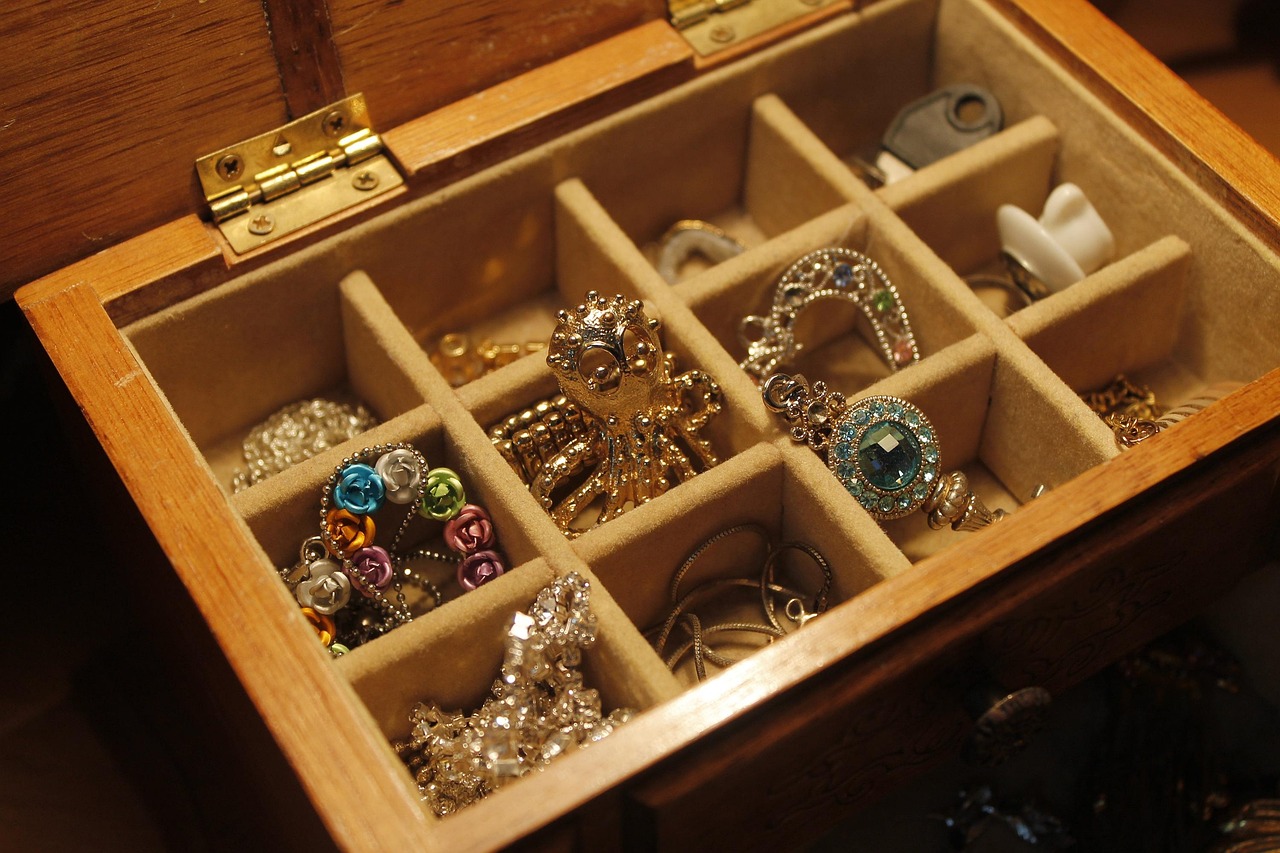
Negotiating the Price
Negotiating the price of antique jewelry can indeed be a delicate process. To navigate this process effectively and ensure you secure a fair deal, consider the following practical tips:
- Do Your Research: Before entering negotiations, it’s crucial to have a solid understanding of the market value of the antique jewelry piece you are interested in. Utilize online resources, recent auction results, and antique jewelry price guides to get an accurate estimate.
- Assess the Condition: Examine the piece thoroughly for any signs of wear, damage, or restoration. Understanding the condition will give you leverage in negotiations, especially if repairs are needed.
- Start Low: When making your initial offer, it’s wise to start lower than your target price. This provides room for negotiation and allows the seller to counteroffer without feeling insulted.
- Be Polite and Respectful: Building a rapport with the seller can significantly enhance your negotiating position. Approach discussions with courtesy and respect, as this can foster a more amicable negotiation environment.
- Be Prepared to Walk Away: Sometimes the best negotiation tactic is to be willing to walk away if the price doesn’t meet your expectations. This shows the seller that you are serious about your budget and may prompt them to reconsider their price.
- Highlight Unique Features: If the piece has unique characteristics or historical significance, use these points to justify your offer. Sellers may be more inclined to negotiate if they see that you appreciate the item’s value.
In conclusion, approaching the negotiation of antique jewelry prices with knowledge and strategy can lead to a more favorable outcome. By following these tips, you can enhance your chances of securing a great deal while enjoying the process of acquiring beautiful antique pieces.
Understanding Market Value
Determining the market value of antique jewelry is a critical step in the purchasing process. Understanding this value not only aids in negotiation but also ensures that you are making a sound investment. This section will guide you through the essential steps to research and establish the fair market price of antique jewelry.
- Researching Historical Sales: Start by examining recent sales of similar pieces. Websites like Antiques Trade Gazette and auction sites provide valuable insights into what collectors are currently paying.
- Consulting Price Guides: Utilize antique jewelry price guides, which can be found in bookstores or online. These guides compile data from various sales and provide average prices for specific types of jewelry.
- Engaging with Experts: Reach out to appraisers or antique dealers who specialize in jewelry. Their expertise can help you understand the nuances that affect value, such as rarity and condition.
- Online Marketplaces: Explore platforms like eBay or Etsy to see asking prices for similar items. This can give you a real-time snapshot of market trends.
When assessing the fair market price, consider the following factors:
| Factor | Description |
|---|---|
| Condition | The state of the jewelry, including any wear or restoration, significantly impacts its value. |
| Provenance | A piece with a documented history or previous ownership by a notable individual can command a higher price. |
| Rarity | Unique or limited edition pieces are generally more valuable than mass-produced items. |
By thoroughly researching these aspects, you can confidently negotiate the price of antique jewelry. Remember, knowledge is your best tool in securing a fair deal.
Building Rapport with the Seller
Establishing a strong connection with the seller is crucial in the process of negotiating the price of antique jewelry. A positive relationship can lead to more favorable terms and a smoother transaction. Here are some effective techniques to build rapport while discussing price:
- Start with a Friendly Greeting: Begin the conversation with a warm and genuine greeting. This sets a positive tone and makes the seller feel valued.
- Show Genuine Interest: Ask questions about the piece’s history, craftsmanship, and any unique features. Showing interest not only helps you learn more but also demonstrates that you appreciate the seller’s knowledge.
- Share Personal Stories: If you have a personal connection to antique jewelry or a similar piece, share your story. This creates a bond and makes the seller more inclined to engage with you.
- Be Respectful and Courteous: Treat the seller with respect, regardless of the negotiation’s outcome. A courteous attitude can go a long way in fostering goodwill.
- Use Positive Body Language: Maintain eye contact, nod in agreement, and smile. Positive body language can enhance the seller’s perception of you as a trustworthy buyer.
- Find Common Ground: Look for shared interests or experiences. This can create a sense of camaraderie and make the negotiation feel more like a conversation than a transaction.
- Be Honest and Transparent: Clearly communicate your budget and intentions. Honesty fosters trust and can lead to more flexible negotiations.
By employing these techniques, you can create a more comfortable atmosphere for both you and the seller. This not only makes the negotiation process easier but can also result in a better price for the antique jewelry you desire. Remember, the goal is to build a relationship based on mutual respect and understanding, which can ultimately benefit both parties in the transaction.
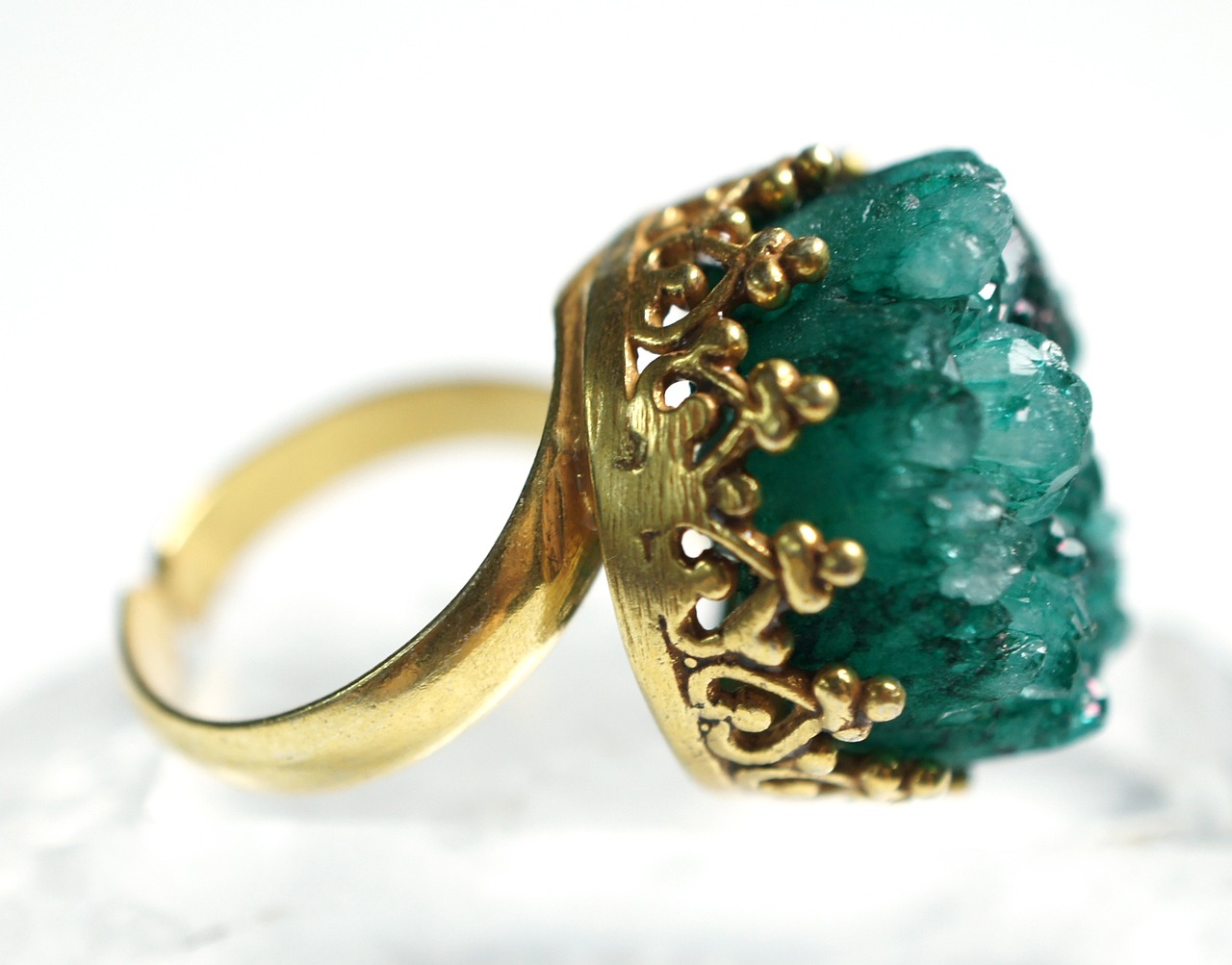
Finalizing the Purchase
When it comes to purchasing antique jewelry, the finalization of your purchase is a critical step that requires careful attention to detail. This stage is where many buyers can make mistakes that may lead to regret later on. To ensure a smooth transaction, consider the following essential steps:
- Request Documentation: Always ask for proof of authenticity and history for the piece you are purchasing. Important documents may include certificates of authenticity, appraisals, and previous sales records. These documents not only validate the piece but also enhance its resale value.
- Understand Return Policies: Before completing your transaction, familiarize yourself with the seller’s return policy. A clear understanding of the return terms is crucial; it protects your investment in case you discover issues with the piece after purchase. Look for policies that allow returns within a specific timeframe and conditions for refunds.
- Examine the Piece Thoroughly: Take the time to inspect the jewelry closely. Look for any signs of damage, repairs, or alterations that may affect its value. If possible, consult with a professional jeweler to assess the piece before finalizing the purchase.
- Negotiate Payment Methods: Discuss payment options with the seller. Using secure payment methods can provide an added layer of protection. Avoid cash transactions when possible, as they offer no recourse if something goes wrong.
- Get a Receipt: Always request a detailed receipt that includes the description of the piece, the price paid, and any relevant documentation. This serves as proof of your purchase and is essential for any future claims regarding authenticity or condition.
By following these steps, you can ensure that your antique jewelry purchase is not only smooth but also a sound investment for the future. Remember, taking the time to finalize your purchase properly can save you from potential headaches down the line.
Requesting Documentation
is a crucial step when purchasing antique jewelry. To ensure that your investment is authentic and has a verified history, it is essential to ask for the appropriate documentation. This section outlines the key documents you should request and provides guidance on how to obtain them.
When considering the purchase of antique jewelry, always ask the seller for provenance documentation. Provenance refers to the history of ownership of a particular piece. This document can include details about previous owners, the origin of the jewelry, and any significant historical context that adds to its value. Provenance not only assures you of the piece’s authenticity but also enhances its collectible value.
Another important document to request is the appraisal certificate. An appraisal provides an expert evaluation of the jewelry’s worth, taking into account its materials, craftsmanship, and market trends. Having a professional appraisal can safeguard your investment and provide peace of mind regarding the price you are paying.
Additionally, inquire about any certificates of authenticity that may accompany the piece. These certificates are often issued by recognized authorities or gemological laboratories and serve as an official verification of the jewelry’s authenticity. They typically include detailed descriptions of the materials used, including any gemstones, and their grades.
To obtain these documents, you may need to do some research. If the seller does not provide them, consider reaching out to reputable appraisers or gemological institutions that can assist in verifying the piece’s authenticity. Online databases and auction house records can also serve as valuable resources for tracing the history of antique jewelry.
In conclusion, always prioritize requesting documentation when purchasing antique jewelry. This practice not only protects your investment but also enriches your understanding of the piece’s historical significance and value.
Understanding Return Policies
Before making a purchase, it is essential to thoroughly understand the seller’s return policy. A clear and fair return policy serves as a safeguard for your investment, ensuring that you have options if the item does not meet your expectations. This section will guide you on what to look for in return policies to protect your purchase.
- Time Frame for Returns: Check how long you have to return the item. A reasonable time frame, typically between 14 to 30 days, is standard. This allows you ample time to evaluate your purchase.
- Condition of the Item: Understand the condition in which the item must be returned. Many sellers require items to be in their original condition, including tags or packaging, to process a return.
- Refund Method: Clarify how refunds will be issued. Some sellers may offer store credit instead of a cash refund, which may not be ideal if you are looking to recover your money.
- Exceptions: Be aware of any exceptions to the return policy. Certain items, such as custom pieces or items marked as final sale, may not be eligible for return.
- Return Shipping Costs: Determine who will bear the cost of return shipping. Some sellers cover this expense, while others may deduct it from your refund.
In addition to these key points, it is wise to read customer reviews regarding their experiences with the seller’s return process. A seller with a transparent and fair return policy is often more trustworthy and customer-oriented.
By being informed about the return policy, you can make a more confident purchase, knowing that your investment is protected should any issues arise.

Protecting Your Antique Jewelry Investment
After acquiring antique jewelry, it is crucial to take steps to safeguard your investment. Proper care and maintenance, along with the right insurance, can help ensure that your valuable pieces retain their beauty and worth over time.
Proper Care and Maintenance
Taking care of your antique jewelry is essential to prevent deterioration. Here are some key tips:
- Regular Cleaning: Gently clean your jewelry using a soft cloth to remove dirt and oils. Avoid harsh chemicals that can damage the materials.
- Safe Storage: Store your pieces in a cool, dry place, preferably in a soft pouch or a jewelry box lined with fabric to prevent scratches.
- Avoid Exposure: Keep your jewelry away from extreme temperatures, humidity, and direct sunlight, which can cause fading and deterioration.
- Professional Inspections: Consider having your antique jewelry professionally inspected and cleaned at least once a year to address any potential issues.
Insurance Options for Antique Jewelry
Insuring your antique jewelry can provide peace of mind and financial protection. Here are some considerations:
- Appraisal: Before insuring your jewelry, obtain a professional appraisal to determine its current market value. This will help set the right coverage amount.
- Specialized Insurance: Look for insurance policies specifically designed for jewelry, which often cover theft, loss, and damage.
- Document Everything: Keep detailed records of your jewelry, including photographs, appraisals, and receipts. This documentation will be invaluable in case of a claim.
By following these tips for maintenance and securing the right insurance, you can protect your antique jewelry investment and ensure its value for years to come.
Proper Care and Maintenance
Taking care of your antique jewelry is crucial to preserving its beauty and value. These exquisite pieces require specialized care to avoid damage and deterioration over time. Here are some essential practices for cleaning and storing your antique jewelry safely:
- Regular Cleaning: Gently clean your jewelry using a soft, lint-free cloth to remove dirt and oils. For more thorough cleaning, use a mild soap solution and a soft brush, but avoid harsh chemicals that can damage delicate materials.
- Avoiding Moisture: Keep your antique jewelry away from excessive moisture. Humidity can lead to tarnishing and corrosion, especially in pieces made of silver or those with gemstones. Store items in a dry, cool place.
- Storage Solutions: Store your jewelry in a soft-lined jewelry box or pouches to prevent scratches. Separate pieces to avoid tangling or scratching, especially those with delicate settings or stones.
- Temperature Control: Extreme temperatures can affect the integrity of your jewelry. Keep your pieces away from direct sunlight and avoid exposing them to heat sources.
- Periodic Inspections: Regularly inspect your antique jewelry for any signs of wear or damage. Look for loose stones, worn settings, or any discoloration that may indicate a need for repair.
- Professional Maintenance: Consider having your antique jewelry professionally cleaned and inspected annually. Experts can provide specialized care and make necessary repairs to maintain the piece’s integrity.
By following these practices, you can ensure that your antique jewelry remains in excellent condition for years to come. Protecting these valuable pieces not only preserves their beauty but also maintains their historical significance and investment value.
Insurance Options for Antique Jewelry
When it comes to antique jewelry, ensuring that your valuable pieces are protected is crucial. This not only provides peace of mind but also safeguards your investment against unforeseen circumstances. In this section, we will explore various insurance options available for antique jewelry and important considerations to keep in mind when insuring these precious items.
First and foremost, it’s essential to understand that not all insurance policies are created equal. There are generally two types of coverage: actual cash value (ACV) and replacement cost. ACV policies will reimburse you for the item’s value at the time of loss, accounting for depreciation. In contrast, replacement cost policies will cover the cost to replace the item with a similar one, without considering depreciation. For antique jewelry, a replacement cost policy is often more beneficial, as it can provide a higher payout for unique items.
Another important factor to consider is whether to use a specialized jewelry insurance provider or a standard homeowner’s insurance policy. While many homeowner’s policies offer some level of coverage for personal belongings, they may not adequately cover high-value items like antique jewelry. Specialized providers typically offer policies tailored to jewelry, ensuring that your pieces are covered in case of theft, loss, or damage.
Additionally, when insuring your antique jewelry, it’s vital to have a professional appraisal. An appraisal will provide an accurate value of your items, which is necessary for determining the correct coverage amount. Make sure to keep this appraisal updated, as the market value of antique jewelry can fluctuate over time.
Lastly, always read the fine print of your insurance policy. Look for any exclusions or limitations that may affect your coverage. Understanding the terms of your policy will help you make informed decisions and ensure that your antique jewelry is adequately protected.
In conclusion, insuring your antique jewelry is a critical step in protecting your investment. By considering different insurance options, obtaining a professional appraisal, and understanding the terms of your policy, you can ensure that your valuable pieces are safeguarded for years to come.
Frequently Asked Questions
- What defines antique jewelry?
Antique jewelry is typically defined as pieces that are at least 100 years old. These items often showcase unique craftsmanship and historical significance, making them valuable collectibles.
- How can I identify authentic antique jewelry?
To identify authentic antique jewelry, look for specific characteristics such as the quality of materials, craftsmanship details, and design styles that correspond to certain historical periods. Familiarizing yourself with common materials and their properties is also essential.
- Where is the best place to buy antique jewelry?
The best places to buy antique jewelry include reputable antique shops, online marketplaces with verified sellers, and auctions or estate sales known for quality items. Always ensure you research the seller’s credibility before making a purchase.
- What should I consider when negotiating price?
When negotiating the price of antique jewelry, it’s important to know the market value of the piece. Building rapport with the seller can also help facilitate a better deal. Be prepared to discuss the jewelry’s features and historical significance.
- How do I protect my antique jewelry investment?
To protect your antique jewelry investment, ensure you follow proper care and maintenance practices. Additionally, consider insuring your pieces to safeguard against loss or damage, providing you with peace of mind.

